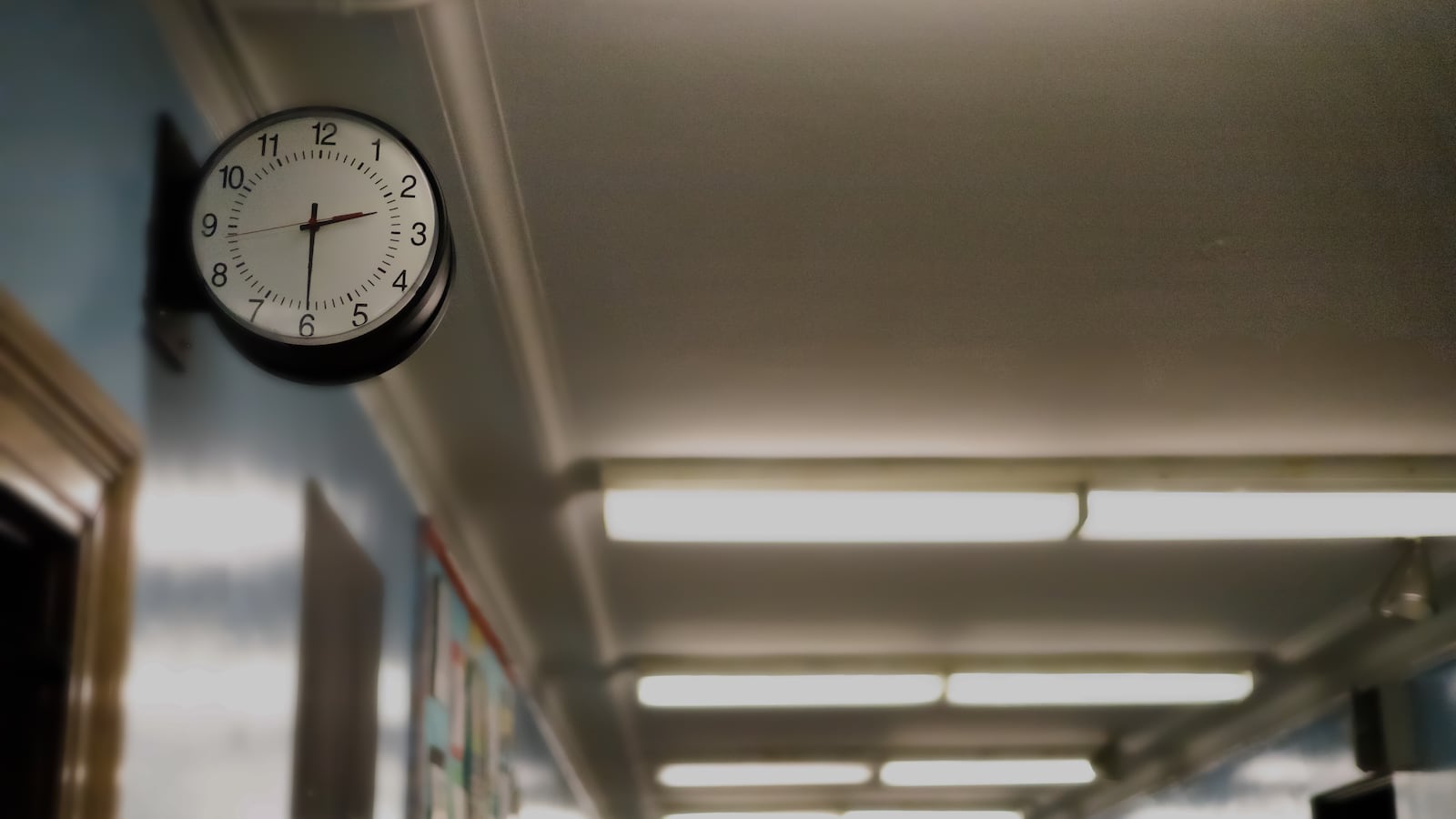As an eighth grade teacher who spent the entire 2020-21 school year teaching remotely, I was eager to return to school in person last year.
I was ready for the aspects of teaching that can’t be replicated online, like handing just the right book to a student based on an interest I’d discovered, chatting with high schoolers who dropped by to say hello (or ask for help), and seeing good things happening in colleagues’ classrooms and implementing them myself the next day.

I recognized there would be challenges ahead. But I hadn’t fully braced for how the school year began.
I’m a veteran teacher with strong prior relationships with many of my students, and still, the atmosphere in some of my classes was surprisingly tense. Meanwhile, in the hallways and around the school, fights, which pre-pandemic had been rare, were common. Students walked out of classes at will. Bathrooms got trashed.
Months into the school year, students tested limits that would usually have been firm within the first few weeks, like trying to sit in the wrong seat or casually continuing conversations once I’d begun giving directions.
While most of the staff at my school had never regularly encountered the most egregious behaviors, the chaos was familiar to me. I recognized a school unprepared for meeting the needs of its students, faculty, and community because I had experienced the same pandemonium years ago when I was a founding teacher at a school that ultimately failed.
That school had opened to relieve overcrowding in three nearby middle schools, including the one I’d been drawn from, gathering all at once students in grades 6-8. Students then, as during last year, found themselves mixed among mostly unfamiliar students. They brought with them a wide range of expectations and habits from their original schools, just like students who spent time learning from home. Many were angry about the unexpected disruption in their routines.
At that new school, where I worked for five years, students were greeted by a staff that barely knew each other, with limited time to form relationships and align on school-wide systems for culture, discipline, or instruction. Operational crises, like textbooks that hadn’t been delivered, copiers that didn’t work, and students who needed schedules reprogrammed, also consumed staff attention.
My current school has faced analogous challenges, given so much time spent physically apart, along with significant “Great Resignation” staff turnover. And in the scramble to manage subs and handle COVID testing during the in-person return, attention was diverted from setting the culture.
My journalism students are launching a ‘Humans of Our School’ project on our website, ensuring every eighth grader has their story told.
Fortunately, this year comes with a fresh start and a chance to turn things around. From experience, I know there might not be another opportunity. Our leadership teams began planning our reset last spring, and with COVID subsiding and staffing (mostly) stabilized, we’ve started this year tightly focused.
Applying the framework from Zaretta Hammond’s book “Culturally Responsive Teaching & The Brain” on the conditions in which students feel safe to learn, we’ve set clear expectations when it comes to hallway safety, tardies, classroom entry and exit, dress code, electronics use, and discipline. Students need to know what to expect from us consistently, what we expect from them, and why.
One mistake we made last year was in relaxing many of our pre-pandemic expectations for conduct and accountability. Our attempts at grace were often misinterpreted as permissiveness, which led many students to tell us they felt unsafe.
This school year, data on student conduct is being tracked (using LiveSchool), and the first school-wide positive incentive, a visit from a shaved ice truck, took place on the first day of September. Meanwhile, students trending towards ineligibility receive check-ins from designated teachers, who set and monitor goals that all staff can view. These proactive (not punitive) check-ins helped many students course-correct and participate in the first activity.
Educators are trying to get on the same page, too. We record ourselves using a targeted teaching strategy and share those videos within our departments. Discussing our videos gives new and veteran teachers alike a chance to master the skills and improve.
I’ve been largely focused on renewing a sense of community. My journalism students are launching a “Humans of Our School” project on our website, ensuring every eighth grader has their story told. I’m helping reboot our athletic program, co-leading our Students Run LA team that trains for the LA Marathon, which has been an important rite of passage for many students and staff at our school for the past decade, and bringing back service projects.
That school I helped found ultimately failed. A critical mass of staff never came together around clear, shared structures and objectives. Year two was mostly spent fighting the same fires as year one. While a belated influx of resources and a change in leadership eventually helped the school move beyond crisis, by then the chance to set the ethos had been lost. Five years after opening, the school was “reconstituted” and restarted with an almost entirely new staff.
The pandemic has been tough on all of us, and schools are not the same places they were in the “before times.” But it’s still possible to create the cultures we want. The window of opportunity, while narrow, is still open for all of us.
Carl Finer teaches middle school English and journalism in South Los Angeles and is a UCLA Writing Project fellow. His work has appeared in outlets such as Zocalo Public Square, Runner’s World, The Imprint, Belt Magazine, and Education Week. You can follow him @CarlFiner.



